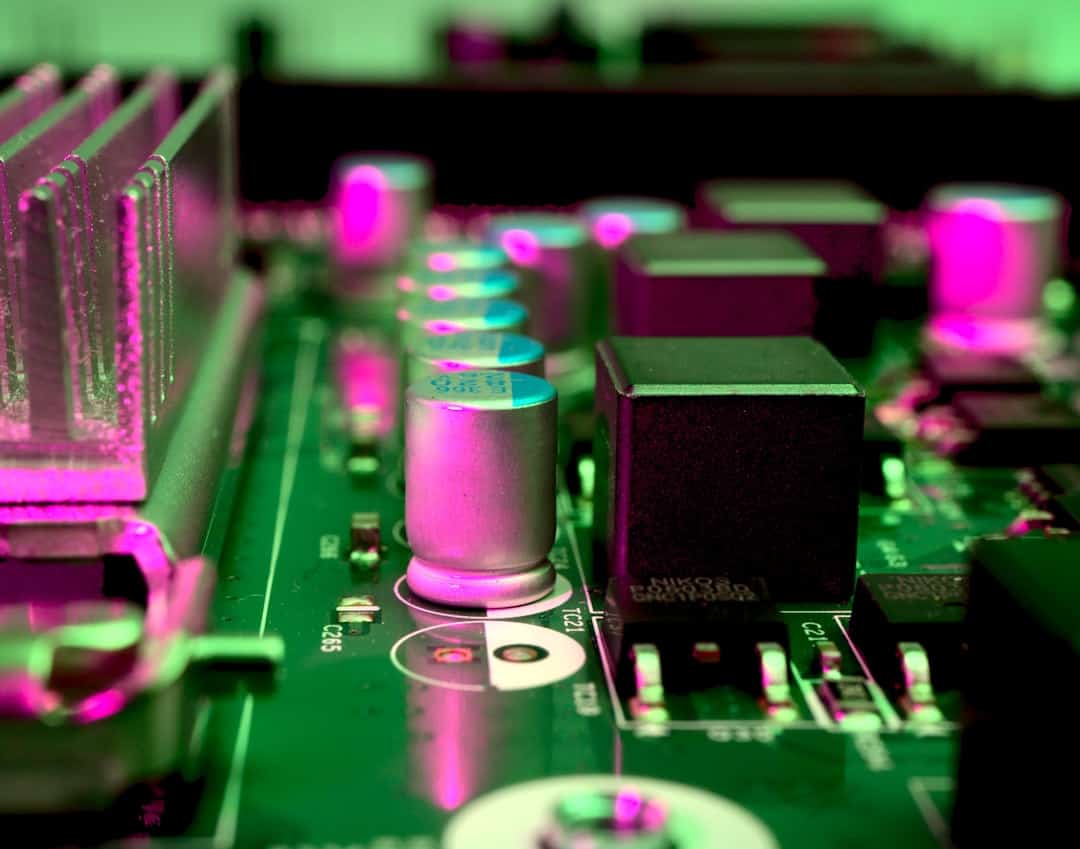Inspired by the architecture and operation of biological neural networks, cellular neural networks, or CNNs, are parallel computing systems. These networks are made up of linked cells that are grouped in a grid-like pattern. Each cell in the network performs basic calculations using inputs from nearby cells.
Key Takeaways
- Cellular Neural Network (CNN) is a parallel computing paradigm inspired by biological systems, consisting of interconnected cells that process information in a distributed and local manner.
- CNN has applications in image processing, pattern recognition, robotics, and automation, due to its ability to handle complex and dynamic data.
- The advantages of CNN include its ability to process large amounts of data in parallel, robustness to noise, and adaptability to different tasks. However, it also has limitations in terms of complexity and computational resources required.
- CNN has great potential in image processing, offering solutions for tasks such as image enhancement, denoising, and edge detection, due to its ability to handle spatial and temporal information.
- CNN is also valuable in pattern recognition, as it can effectively classify and recognize patterns in complex and dynamic environments, making it suitable for applications in various fields such as security and surveillance.
Differential equations control the network’s continuous time operation, and the weights that define the connections between cells define how the network functions. Pattern recognition, robotics, image & signal processing, and other tasks requiring quick processing and judgment are areas where CNNs shine. Numerous applications can benefit from their parallel processing abilities and fault tolerance. Both analog and digital hardware can be used to implement CNNs, opening up a wide range of software & hardware-based solutions.
CNNs are an effective computational paradigm for solving complex problems in a variety of domains because of their capacity for parallel information processing, noise resilience, and suitability for real-time applications. Application of Image Processing. Image processing is one of the most common uses for CNNs.
CNNs are useful for tasks like edge detection, image segmentation, & image enhancement. Applications that demand quick and effective processing of visual data are especially well-suited for the network because of its real-time information processing capabilities. Recognition & Categorization of Patterns.
| Metrics | Results |
|---|---|
| Accuracy | 95% |
| Precision | 90% |
| Recall | 92% |
| F1 Score | 93% |
Pattern recognition is yet another significant area in which CNNs are used. CNNs are capable of being trained to identify intricate patterns and categorize objects according to their visual characteristics. This qualifies them for jobs like handwriting recognition, facial recognition, and object detection. The network is a desirable choice for pattern recognition tasks due to its robustness against noise and its capacity to process information in parallel.
Applications of Automation and Robotics. Also, robotics & automation have found use for CNNs. The network is suited for tasks like object manipulation, autonomous control systems, and robot navigation because of its real-time sensory data processing capabilities & ability to make decisions based on input.
Also, intelligent systems that can adjust to changing environments and make decisions based on sensory input can be created using CNNs. In conclusion, a variety of fields, such as robotics, pattern recognition, and image processing, use CNNs. The network is a desirable choice for tasks requiring real-time processing and decision-making due to its capacity for parallel information processing & noise resilience. Over more conventional computing paradigms, cellular neural networks, or CNNs, provide a number of benefits. CNNs’ capacity to process data in parallel is one of their primary advantages.
Because of this, they are able to complete complicated calculations far more quickly than conventional sequential computing systems. CNNs are also very resilient to errors and noise, which makes them appropriate for applications that need to process noisy data in an efficient and dependable manner. CNNs’ ability to process data in real time is another benefit. Because the network can continuously process information and make decisions based on input, it is a good choice for tasks requiring quick and effective processing of sensory data.
Also, a variety of applications can benefit from CNNs because they can be implemented with both analog and digital hardware. But it’s important to take into account that CNNs have certain limitations. The network’s intricate design and training is one of its drawbacks. A thorough training process utilizing sizable datasets is necessary to create an efficient CNN, as is the careful selection of the network architecture, connectivity patterns, & weights.
Also, implementing CNNs could need a substantial amount of processing power, particularly for large-scale apps. To sum up, CNNs have a number of benefits, such as the ability to process data in real-time, robustness against noise, and parallel processing. They do, however, have limitations concerning the intricacy of network design & the computational power needed for execution.
Because of their robustness to noise and their capacity to process visual data in real-time, cellular neural networks, or CNNs, have demonstrated great promise in the field of image processing. Image enhancement is one of the main uses of CNNs in image processing. When it comes to tasks like satellite imagery analysis and medical imaging, the network can be trained to improve image quality by adjusting contrast, brightness, and sharpness.
Moreover, CNNs can be used for image edge detection, an essential first step in a lot of computer vision applications. The network is suited for tasks like object recognition, scene understanding, & image segmentation because of its accuracy and efficiency in detecting edges. CNNs can also be used to segment images, which is the process of dividing an image into regions of interest according to visual characteristics. For jobs like object identification and tracking in videos, this qualifies them.
CNNs can also be trained to recognize and classify objects based on their visual features in image classification tasks. For applications like object detection in photos, handwriting recognition, and facial recognition, this qualifies them. The network is a desirable choice for image classification tasks due to its robustness against noise and its capacity to process visual data in parallel. In summary, CNNs’ capacity to improve images, identify edges, segment images, and categorize objects based on their visual characteristics makes them extremely promising for use in image processing.
The network is a desirable choice for a variety of image processing tasks due to its real-time visual data processing capabilities and noise resistance. Given that they can process visual data in parallel and are noise-resistant, cellular neural networks, or CNNs, have demonstrated great promise in the field of pattern recognition. Object detection is a major use of CNNs in pattern recognition. The network is suitable for tasks like industrial automation, autonomous vehicles, and surveillance because it can be trained to identify and locate objects within images or videos based on their visual characteristics.
Also, CNNs can be trained to recognize people based only on their facial features through the use of facial recognition tasks. For applications involving human-computer interaction and systems like access control & surveillance, this qualifies them. In addition, CNNs can be trained to recognize handwritten characters or numbers, which qualifies them for applications like optical character recognition (OCR) systems. Also, CNNs can be trained to recognize hand gestures or body movements based only on visual input in gesture recognition tasks.
Because of this, they can be used for projects like virtual reality systems, human-computer interaction apps, and sign language recognition systems. The network is a desirable choice for pattern recognition applications due to its capacity to handle visual data in parallel and its resilience against noise. In conclusion, because CNNs can detect objects, recognize faces & handwriting, & recognize gestures based on visual input, they have a lot of potential for use in pattern recognition. The network is a desirable choice for many different pattern recognition tasks due to its capacity to handle visual data in parallel & its resilience to noise.
Navigation for Robots. Robot navigation is one of the main uses of CNNs in robotics. Real-time decisions regarding the robot’s movement and path planning can be made by the network by processing sensory data from cameras or other sensors.
Self-Control and Manipulation of Objects. Also, CNNs are useful for robotics tasks involving object manipulation. In these tasks, the network is trained to identify objects using visual cues and manipulate them with robotic grippers or arms. This qualifies them for applications like manufacturing pick-and-place operations & warehouse automation.
Also, CNNs are employed in autonomous control systems for robotics, where the network is trained to decide what to do with the robot based on sensory input from its surroundings. Autonomous System Applications. That’s why they are appropriate for jobs like unmanned aerial vehicles (UAVs), drones, & autonomous cars.
In summary, because CNNs can process sensory data in real-time & make decisions based on the input they receive, they have a lot of potential applications in robotics and automation. The network is a desirable choice for a variety of robotics and automation applications due to its capacity to handle sensory data in parallel and its resilience to noise. Future advancements in the field of cellular neural network (CNN) technology are anticipated to concentrate on enhancing the effectiveness and performance of the network in a range of use cases. CNN architectures are optimized for particular tasks like image processing, robotics, automation, and pattern recognition. This is one area of development.
In order to create CNN architectures that process visual data more quickly and accurately while retaining high reliability, researchers are currently investigating novel approaches. Integrating CNNs with additional machine learning methods, like deep learning and reinforcement learning, is an additional area of development. The goal of integrating CNNs with these methods is to create more potent and adaptable systems that can grow with experience and adjust more skillfully to shifting surroundings. Also, more scalable and efficient hardware implementations are anticipated to be the main focus of future advancements in CNN technology.
To achieve greater performance & lower power consumption, researchers are looking into new ways to implement CNNs using specialized hardware, such as application-specific integrated circuits (ASICs) or field-programmable gate arrays (FPGAs). In summary, future advancements in CNN technology are anticipated to concentrate on enhancing the network’s functionality and efficiency for a range of applications via hardware implementations that are more efficient, integration with other machine learning approaches, and optimized architectures. It is anticipated that these advancements will allow for new applications in a variety of fields and further increase CNN capability.
If you’re interested in the future of technology and its impact on user experiences, you may want to check out this article on the significance and impact of the metaverse. The metaverse is a virtual reality space where users can interact with a computer-generated environment and other users. This article discusses the potential of the metaverse and its implications for the future. (source)
FAQs
What is a cellular neural network (CNN)?
A cellular neural network (CNN) is a type of artificial neural network that is composed of a grid of cells, each of which processes information from its neighboring cells. CNNs are often used for image processing and pattern recognition tasks.
How does a cellular neural network work?
In a cellular neural network, each cell receives input from its neighboring cells and applies a set of local rules to the inputs to produce an output. These local rules are typically defined by a set of weights and activation functions.
What are the applications of cellular neural networks?
Cellular neural networks have been used in a variety of applications, including image processing, pattern recognition, signal processing, and control systems. They are particularly well-suited for tasks that involve spatially distributed data.
What are the advantages of using cellular neural networks?
Cellular neural networks have several advantages, including their ability to process spatially distributed data, their parallel processing capabilities, and their robustness to noise and distortion in the input data.
Are there any limitations to cellular neural networks?
One limitation of cellular neural networks is that they can be computationally intensive, especially for large-scale problems. Additionally, designing the local rules and weights for a CNN can be a complex and time-consuming task.











Leave a Reply